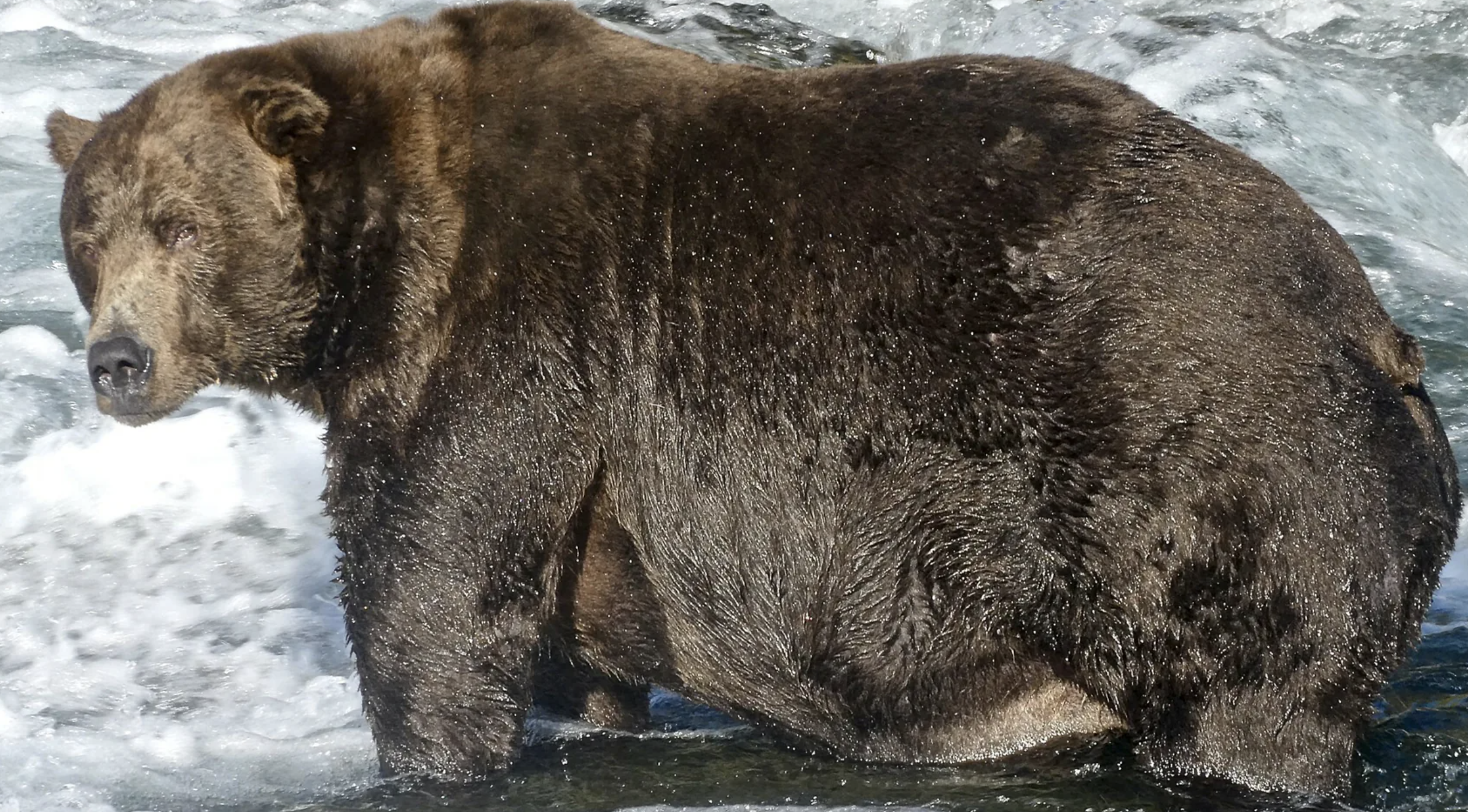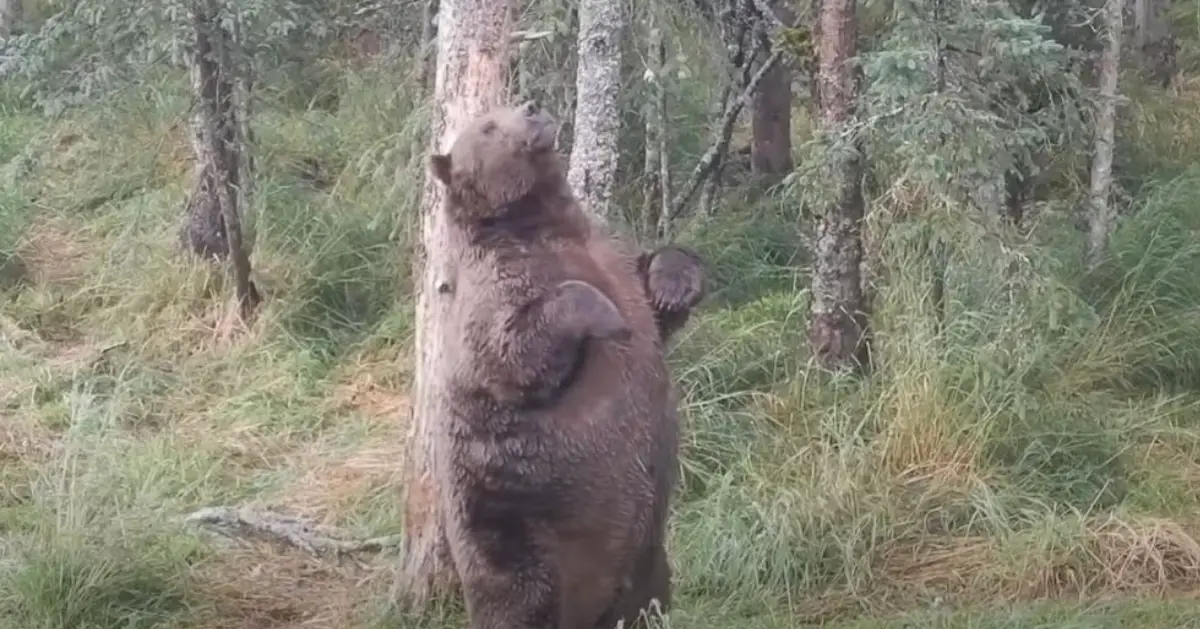In the wilderness you definitely have to be prepared for the worst, but apparently this bear has taken these words way too serious. In the preparation for the upcoming winter, this chonky fella eat so much he barely move. The gourmand bear was recently caught on film in the Katmai National Park and Preserve, and the footages of him are nothing but internet gold.

With the rush winter approaching, the bear, also known as 747, wanted to be prepared, so he reached enormous size. The dominant male already weighs around 1,400lb…and counting. However, his impressive size won’t be a problem if he can walk, though. But 747 has been recently caught by a National Park Service’s camera struggling to climb a river bank.

Although he’s now an Internet sensation, the bear’s chubbiness comes as a pretty normal thing judging by the fact he’s actually the largest bear to live on the Brooks River. And even though he can barely walk due to the massive amount of salmon he eat, his story is nothing but a real success for conservationists.
Bear 747 is already on the struggle bus, and we’re here to celebrate his chonk success. pic.twitter.com/T3May0Sx9H
— explore.org (@exploreorg) August 16, 2021
“This is a story about a very healthy ecosystem,” Naomi Boak, ranger at Katmai National Park and Preserve, said. “It’s about salmon that have cool enough and fresh enough water to thrive.”
Unsurprisingly, this isn’t the first year 747 face difficulties to move, because of his size. Nevertheless, judging by his appetite, it is nearly impossible for any other bear to overthrow 747 in the coming years, as the fattest bear at Brook Falls. Just to imagine how a usual meal looks like for the massive animal, he has been spotted earlier this summer gobbling around 15 salmons in just a few hours. A salmon has around 5,000 calories, so you do the math!
Happy #FatBearTuesday! It’s time for your FINAL vote of the week in the ultimate showdown: jumbo jet 747 or Chunk? The #FatBearWeek polls are now open at https://t.co/Jl79YcAj6z pic.twitter.com/9bczdP3n8g
— explore.org (@exploreorg) October 6, 2020

